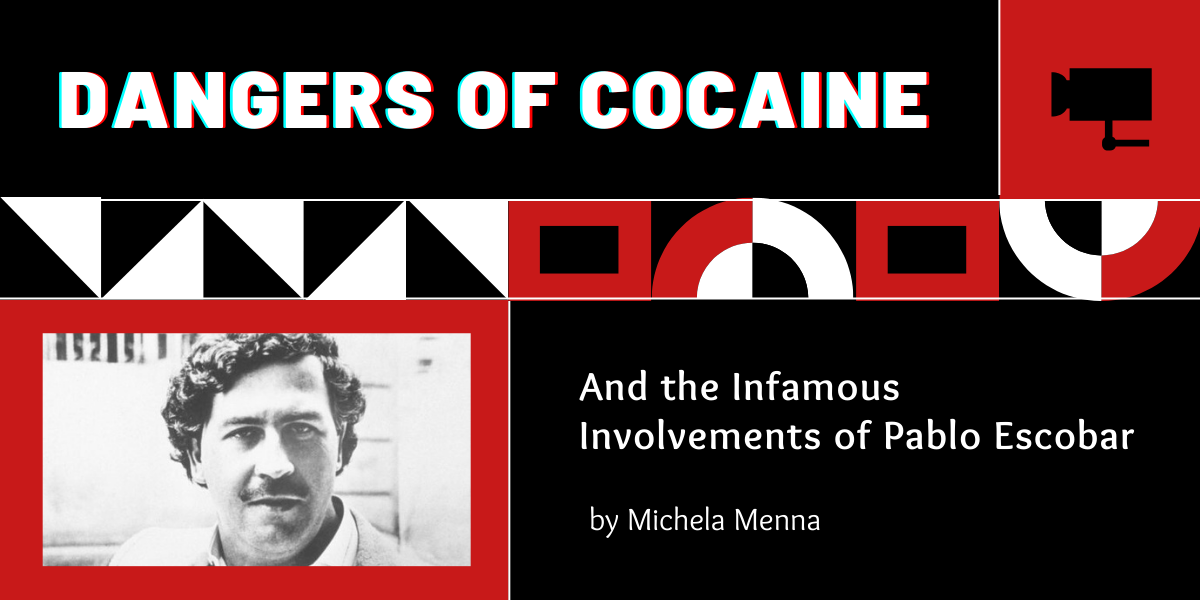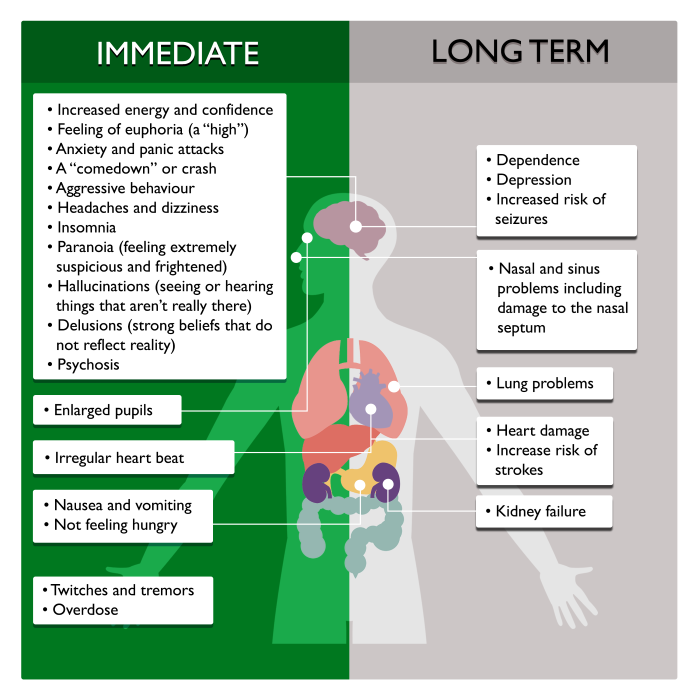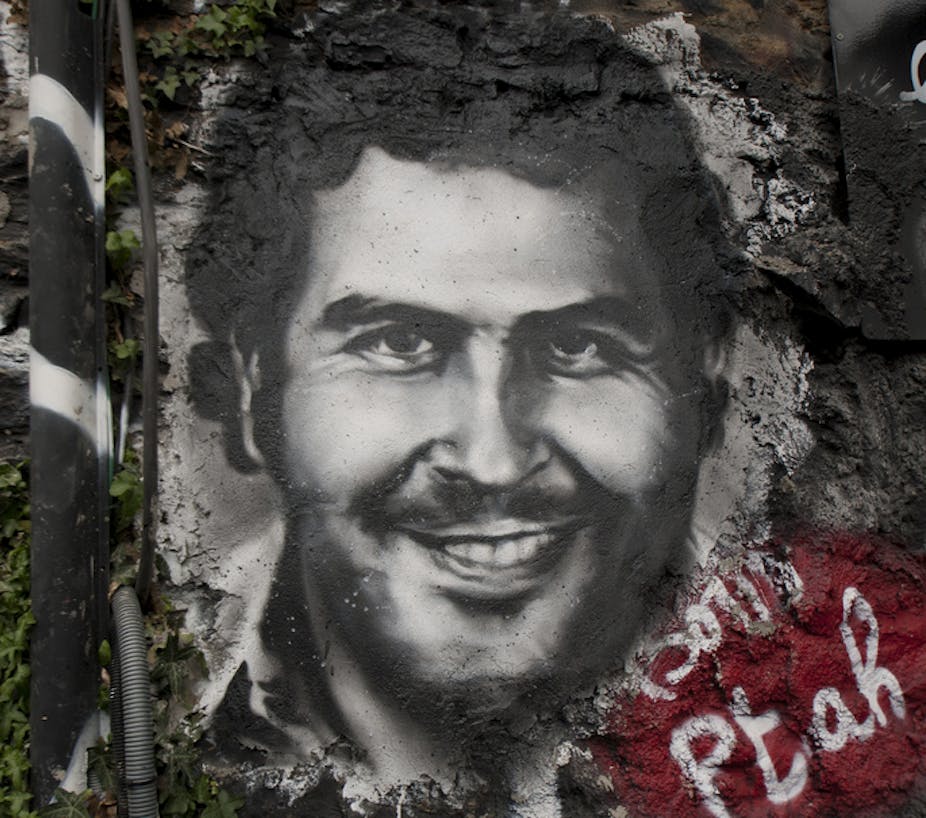The Dangers of Cocaine and The Infamous Involvements of Pablo Escobar

Note: This article contains information and imagery some may find disturbing. However, I would sincerely urge you to be informed on what drugs can do to you, even if it’s not through this article. Please stay safe and stay away from drugs. Thank you.
Cocaine – A Transient Summary
The taking of drugs is often joked a lot about amongst us teenagers – myself included. For one, I always jokingly ask someone what drugs they’re taking and if I can have a discount every time they say something unbelievably stupid or borderline concerning (Yes, I do love my friends very much). However, as I thought about it more I came to a simple conclusion; this is absolutely no joke.
Cocaine is a powerful and short-acting stimulant drug made from the leaves of a plant called coca. It mainly grows in South America, particularly in Colombia, Bolivia, and Peru. Its most common intake is being snorted through the nose, though it can also be injected or eaten. There is also a variant called crack cocaine, a more addictive form of the substance that is usually smoked.

It is a powerful stimulant that makes you feel more alert and energetic, and less hungry or thirst. Despite this, it can also give headaches, chest pain, stomach pain, nausea and illness, tremors, high blood pressure, change in personality, irritability, paranoia, or hallucinations.
A dose’s effects can last for up to 20 minutes, making you feel exhausted and run down afterwards, leaving you to crave for more, and therefore leaving your body getting used to the drug, getting you addicted for more. Each intake must be greater to achieve the same “over the moon” effect. It’s extremely complicated to quit, as long periods of its absence will cause you to “crash”, its causes including fatigue, insomnia, restlessness, and weight loss.
The intake of cocaine puts you at risk of developing innumerable health concerns, such as loss of voice (through smoking), erratic behaviours, damaging of the nose’s membranes, grandiosity, anxiety and paranoia. It slowly deteriorates your body in tons of ways, from decreasing your brain’s ability to simply function properly, to significantly weakening and injuring your heart, digestive system, kidneys, a liver, to causing respiratory problems, such as pneumonia and asthma.

Cocaine is, overall, a stimulant that can cause immediate death, most commonly occurring through an overdose. This can take the form of a heart attack, stroke, or seizure. The median lethal dose of cocaine is 96mg per kilogram of weight, or through about 6.5 grams of cocaine for an individual of about 68kg. In 2017, there were nearly 14,000 cocaine overdoses that resulted in fatality.
The Process and Contents of Cocaine
As previously mentioned, cocaine in a natural state is only produced in Colombia, Bolivia, and Peru. This is due to them having the perfect climate, as there’s neither summer or winter, and the weather is constantly changing from a sunny to a rainy day. This is the perfect sort of climate for South American coca plants.
There are about 10 different types of cocaine, including pink cocaine, black cocaine, fish scale cocaine, and synthetic (medical) cocaine. However, the most popular of these is the Bolivian Blanca, which can only be harvested thrice a year, making it the most prestigious, the most cultivated, and overall, the most demanded.

The process of creation of the aforementioned cocaine (or one method to create it) is nothing short of putrid. Firstly, coca leaves are mixed with construction cement into a form of dough like bread. When it’s soft, it’s left to rot in kerosene, gasoline, or pig urine. Then, as a reactant, acetone is used, such as the type used on nail polish. Lastly, the least harmful substance, ether, is used to whiten the cocaine. Cocaine is actually of a beige colour, but by turning the substance white, it makes it seem more clean, more pure, simply more innocent and appealing. It is then filtered, and then, as it is quite humid, the drying process begins. Finally, they are packaged in 1kg bricks, marked with a silicone logo, and sent out for the consumption of the world.
The King of Cocaine – Pablo Escobar
Pablo “El Doctor” Emilio Escobar Gaviria was arguably the world’s most powerful drug trafficker in the 1980’s and early 90’s. He was a Colombian criminal, considered the richest criminal ever, who initiated his delinquency early in life. While still a teenager, he would sell fake diplomas, smuggle stereo equipment, and steal and resell tombstones. He would also steal cars, causing his first arrest in 1974.

By the mid 1970’s, he was involved in drug smuggling due to the growth of the cocaine industry in Colombia, particularly through the help he provided to the Medellín cartel, whom he served as head of said organization, and focused upon the production, selling, and distribution of cocaine.
By the mid 1980’s, the cartel was in domination of the cocaine trade, causing Escobar to wield incredible power and wealth, becoming worth approximately $25 billion. He used such wealth to create the 2,800-hectare estate Hacienda Nápoles (Naples Estate) in Colombia, which included a soccer field, artificial lakes, a bullfighting arena, an airstrip, a tennis court, and a populated zoo housing anywhere from giraffes, to camels, to hippopotamuses, to anything else you could think of. He also funded various projects in aid of the poor, of which perception lead to him winning an election to an alternate seat in the country’s congress in 1982.
This philanthropy, however, was a mask to his ruthlessness, handling problems with a “plata o plomo” (“silver”/bribes or “lead”/bullets). His victims consisted of rival drug traffickers, particularly the Cali cartel, government officials, policemen, and civilians. A notable crime of the cartel was a bombing aboard a plane in 1989. It had the objective to kill an alleged informant yet resulted in the deaths of over 100 people.

As more blood was shed, a massive manhunt in the search of Escobar ensued. Meanwhile the government began negotiations for his surrender, which he did in June 1991 and was jailed. He however built a luxurious prison that became known as La Catedral, which included a sauna, a football field, a club and a waterfall. However, after torturing and killing two cartel members here, officials moved him to a less accommodating prison, from which he escaped in July 1992. The Colombian government then launched another manhunt, with the aid of officials and rival traffickers. Escobar was found and killed the day after his 44th birthday in his hideout in Medellín, where he had cake, wine, and marijuana. A chase and gunfight ensued between Escobar and his bodyguard and Colombian upon the roof, in which Escobar was fatally shot (though some speculate he committed suicide). Soon after, the Medellín cartel collapsed.
Amongst other notable partners, he had formed an alliance with the Chilean drug chemist Mateo “Cuca” (meaning “Cockroach”) Moreno, earning his nickname after surviving a massacre of fellow drug dealers by the Chilean Army. whom aided in the cartel’s efforts greatly. However, after feeling cheated out of the precocious business, he betrayed Escobar by informing DAS colonel Jose Huis Herrera that he hid cocaine in the spare tires, leading to over $4 million worth of cocaine being confiscated by the government. Enraged, Escobar offered Herrera $1 million to tell him who betrayed him, and the latter gave in. Escobar had Moreno’s drug dealer German Zapata assassinated in Miami first, and later had Moreno and two policemen brought out to him. He killed the two policemen before shooting Moreno in the head, then several times in the chest.

My Conclusion
The disruptive world of drugs is something hardly mentioned or spoken of amongst our community and is often more referred to as a joke than anything, something I say doing so myself. What we do not realise is the destruction it brings to so many people and places, making what could be a peaceful and incredible land into a real life horror.
We need to strive to end the trafficking of cocaine as much as possible by staying clear of it, as the less you buy, the less economically fruitful the activity will be. Once you commence usage, it is incredibly difficult to quit. It is addictive, it is dangerous, and often times it’s even lethal. It only brings to a life of depression and illness, and in worst cases like Escobar, even a life of criminality and blood.
Stay safe and stay away from the troublesome trafficking of cocaine.
